Fighting fires with aging tankers
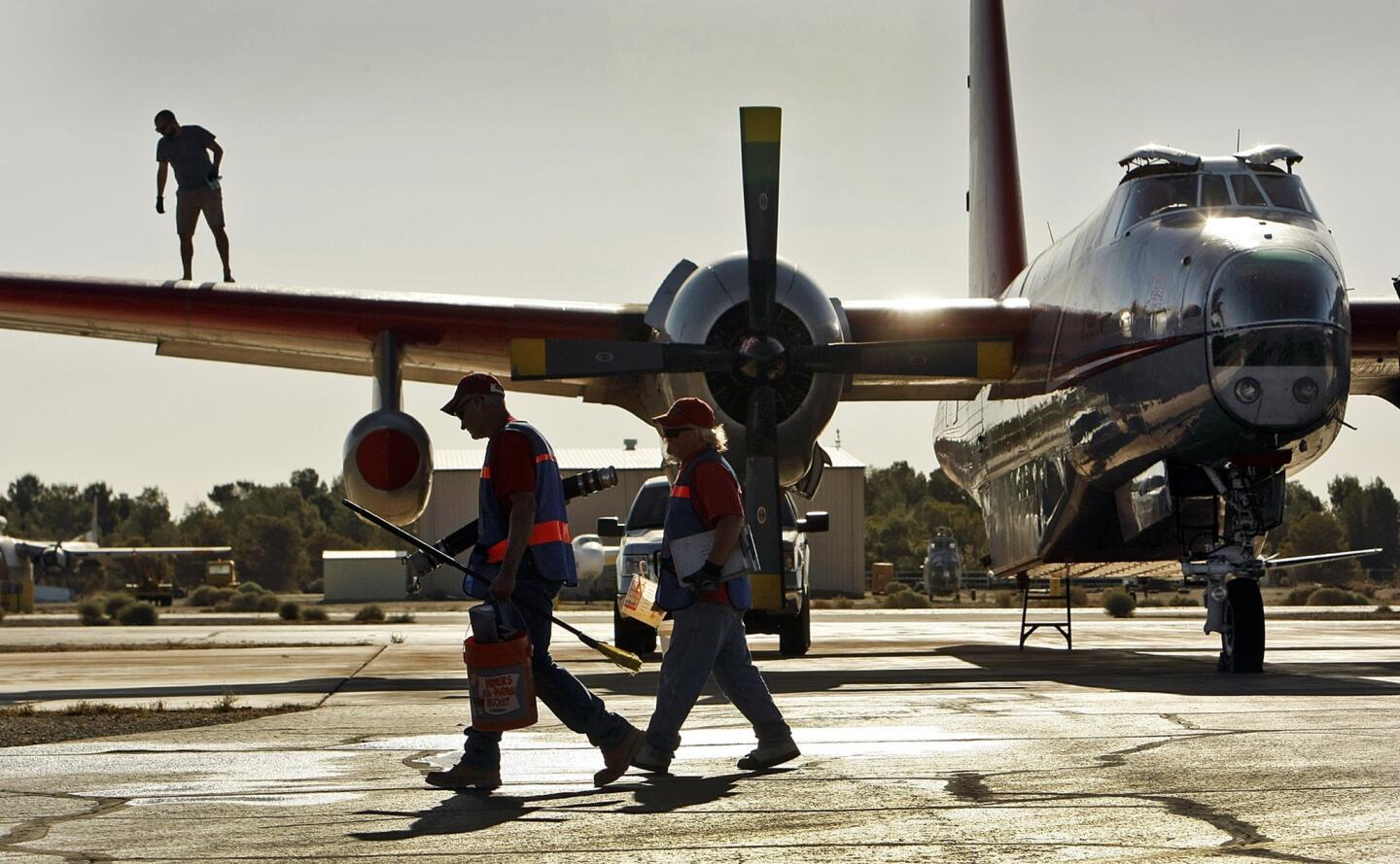
Tom Dux, a pilot with Neptune Aviation Services Inc. of Missoula, Mont., walks on the wing of his Lockheed P-2V tanker No. 7 in a preflight check as the wildfire tankers stage at General William J. Fox Airfield in Lancaster. The Neptune Aviation Services planes were called in to battle the Powerhouse fire that swept into the Angeles National Forest in the Lake Hughes and Lake Elizabeth area. (Al Seib / Los Angeles Times)
Many of the planes used to fight wildfires are aging, making them potentially dangerous and difficult to maintain. Neptune Aviation Services Inc. of Missoula, Mont., has lost eight crew members to crashes in the last five years. It is the Forest Service’s biggest air tanker contractor.
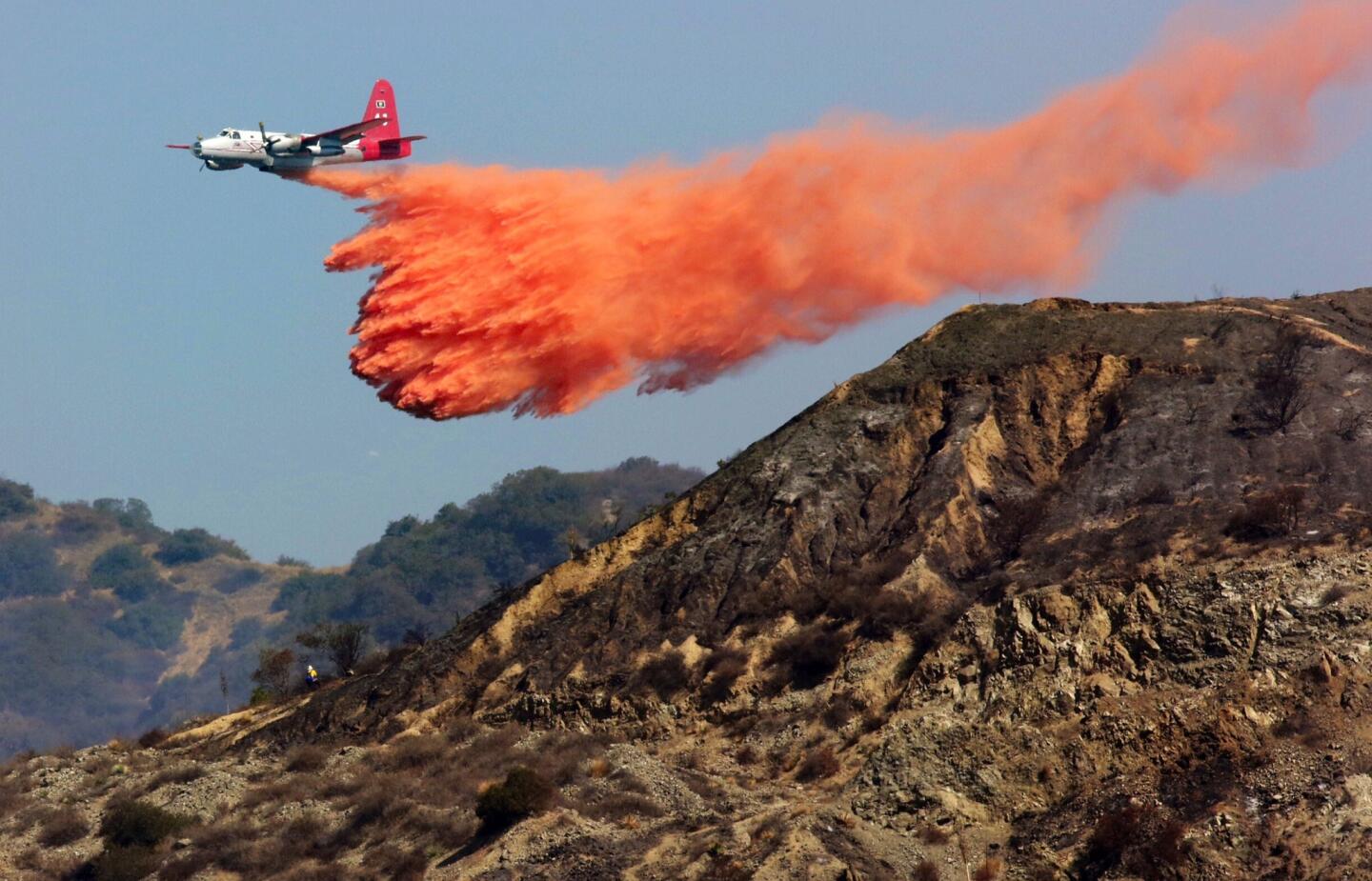
A P-2V drops retardant on the Madre fire in the Angeles National Forest above Azusa. (Irfan Khan / Los Angeles Times)
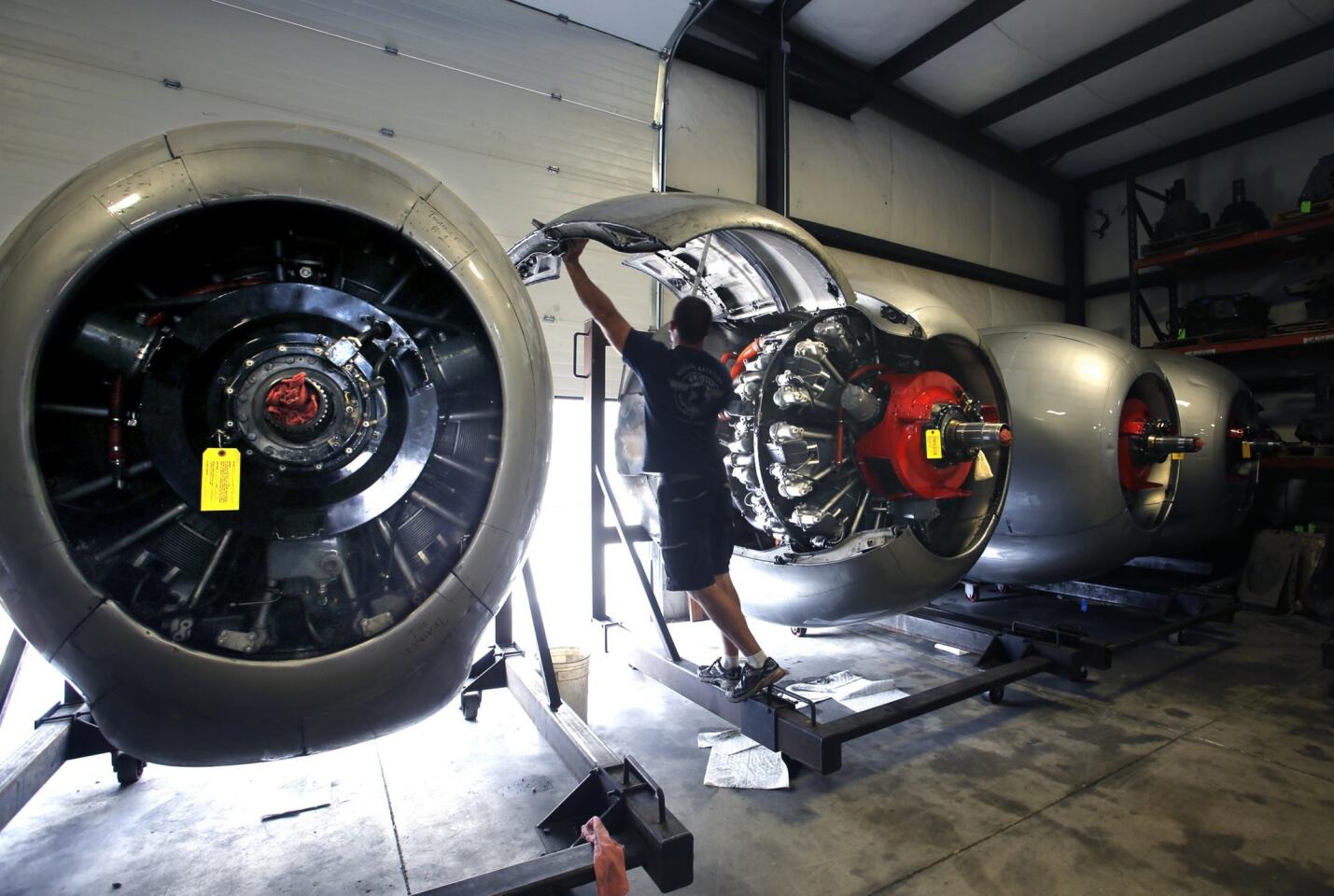
Aircraft mechanic Brian LaForest in the engine room at Neptune Aviation Services Inc., where four refurbished Wright engines are kept at the ready for the company’s fleet of Lockheed P-2V Neptune firefighting airplanes. (Don Bartletti / Los Angeles Times)
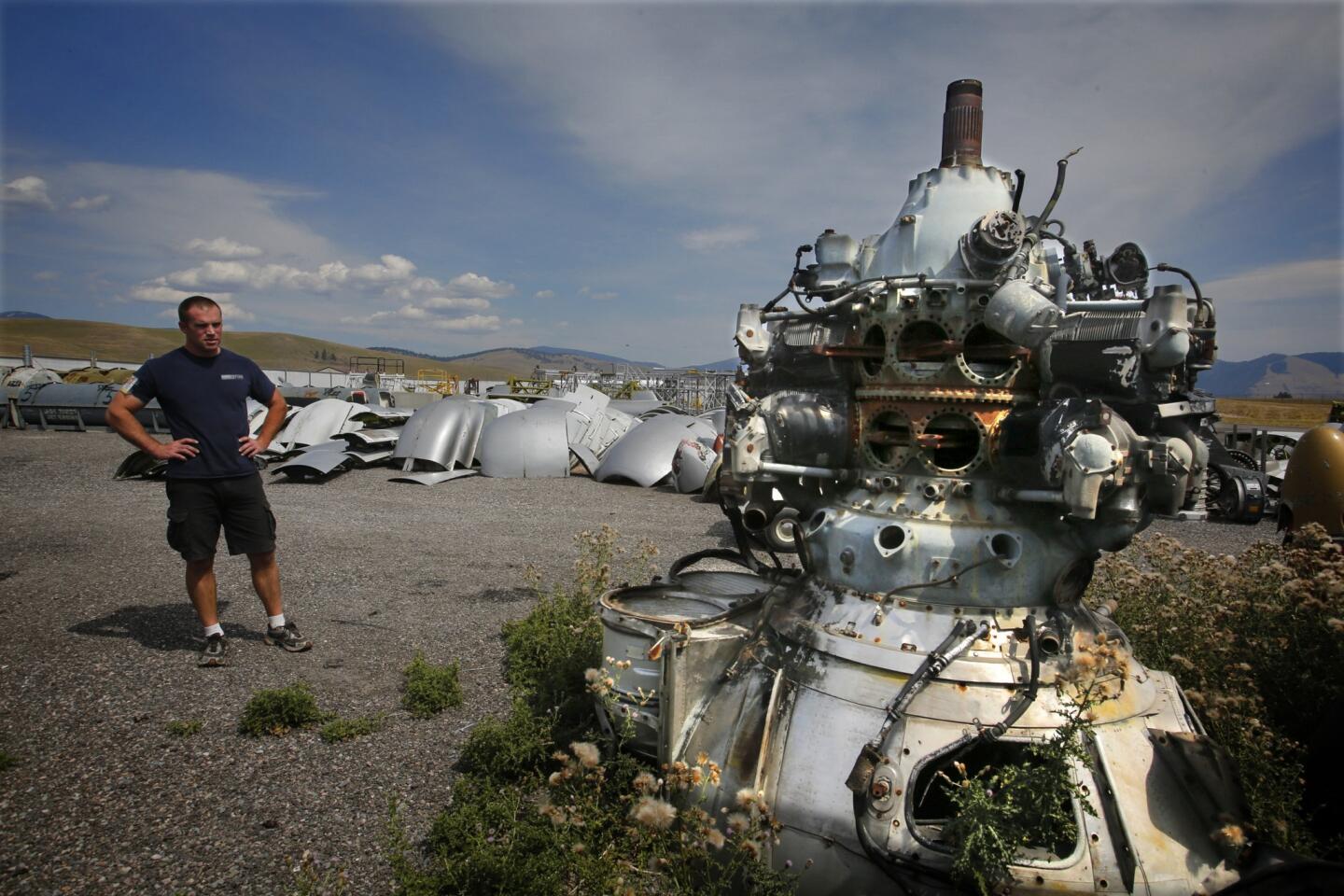
Aircraft mechanic Brian LaForest looks at a surplus Wright aircraft engine in the salvage yard at Neptune Aviation Services Inc. in Missoula, Mont. Because no replacement parts for the P-2V firefighting aircraft are being made, the company salvages parts or makes them from the original Lockheed blueprints. (Don Bartletti / Los Angeles Times)
Advertisement
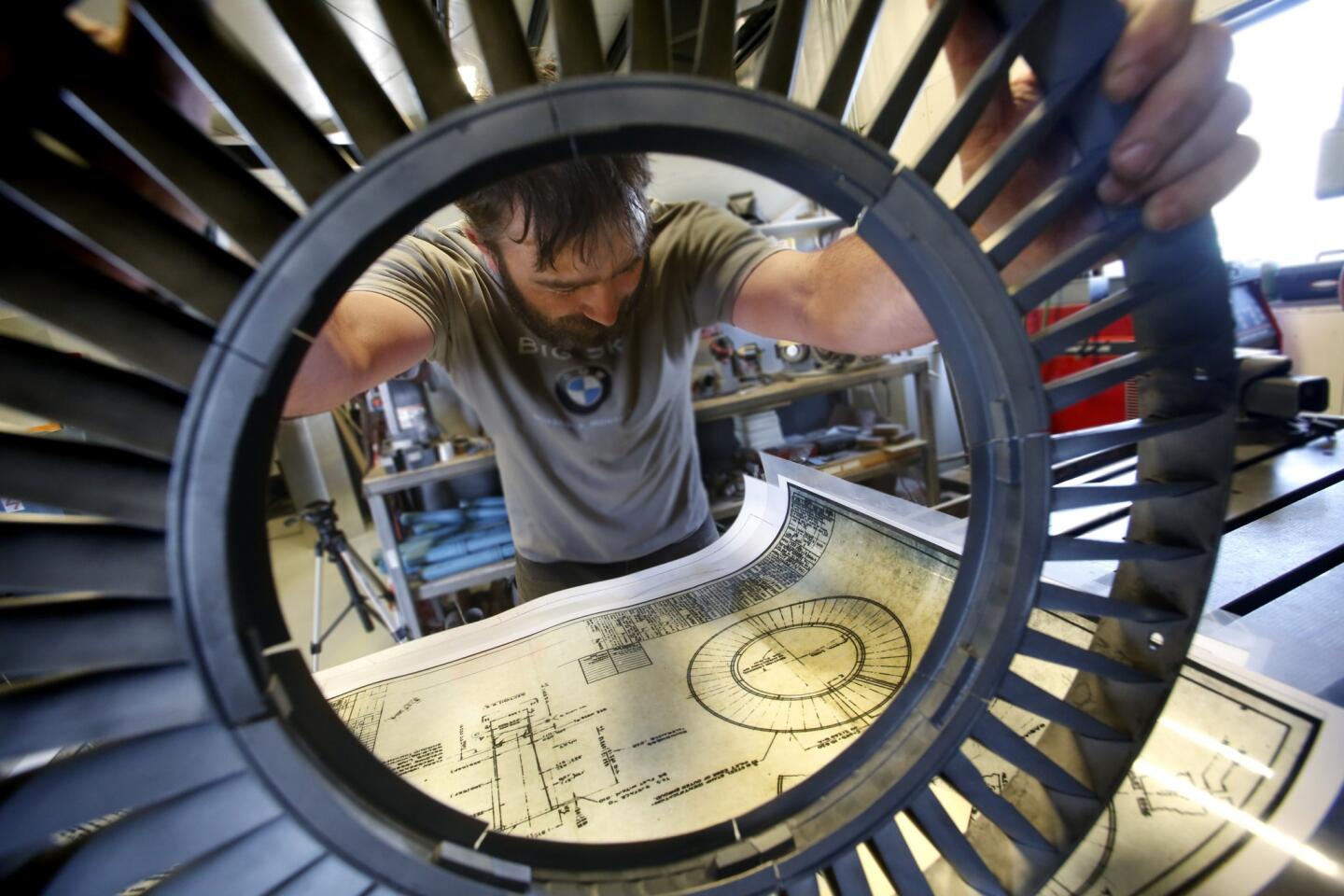
Aircraft mechanic Eric Stavish reads an original Lockheed P-2V airplane blueprint at Neptune Aviation Services Inc. When spare parts for the nearly 60-year-old firefighting planes can’t be found, the company makes them from scratch. (Don Bartletti / Los Angeles Times)
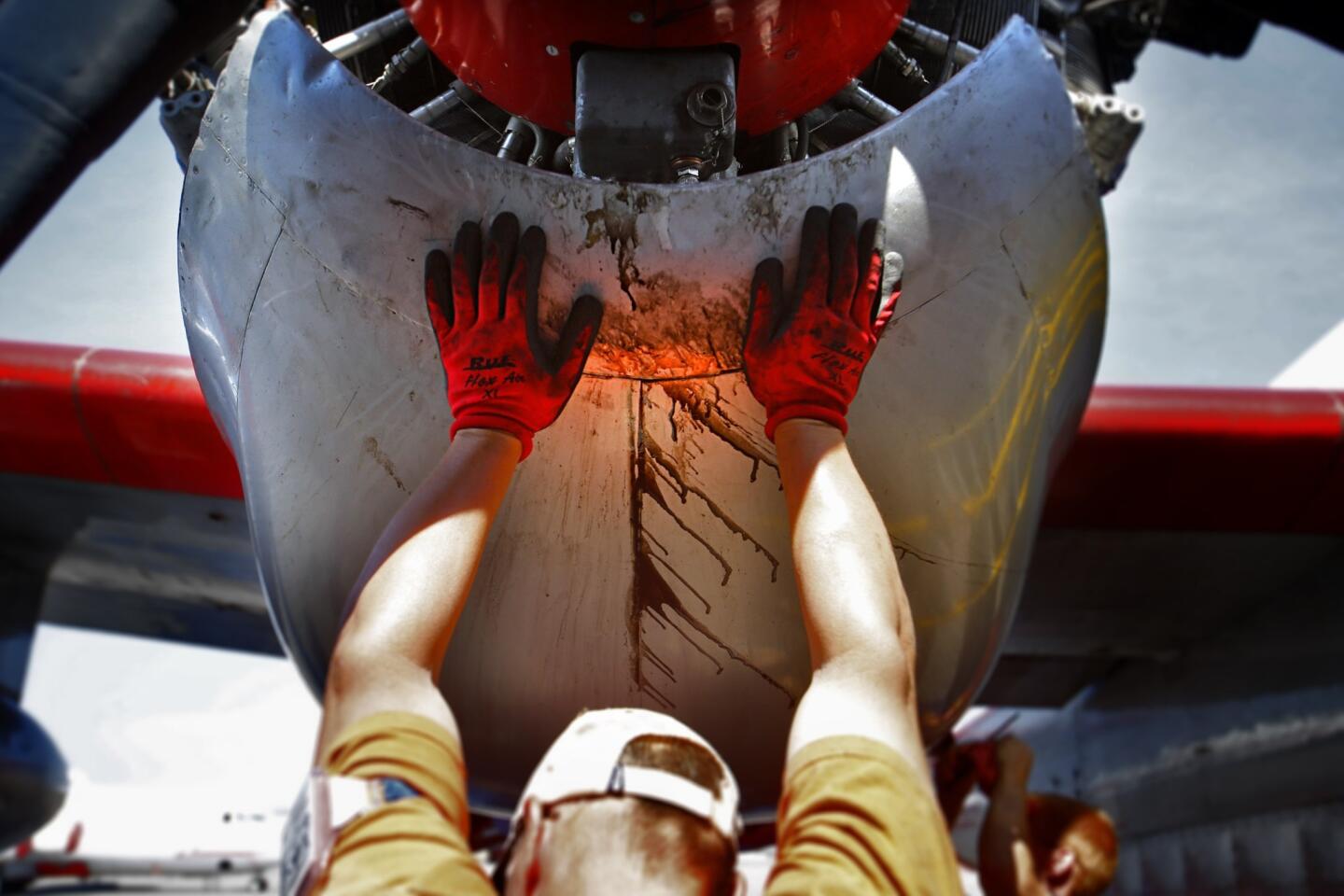
Oil seeps through the engine cowling on an old Lockheed P-2V aircraft after maintenance testing at Neptune Aviation Services Inc. in Missoula, Mont. (Don Bartletti / Los Angeles Times)
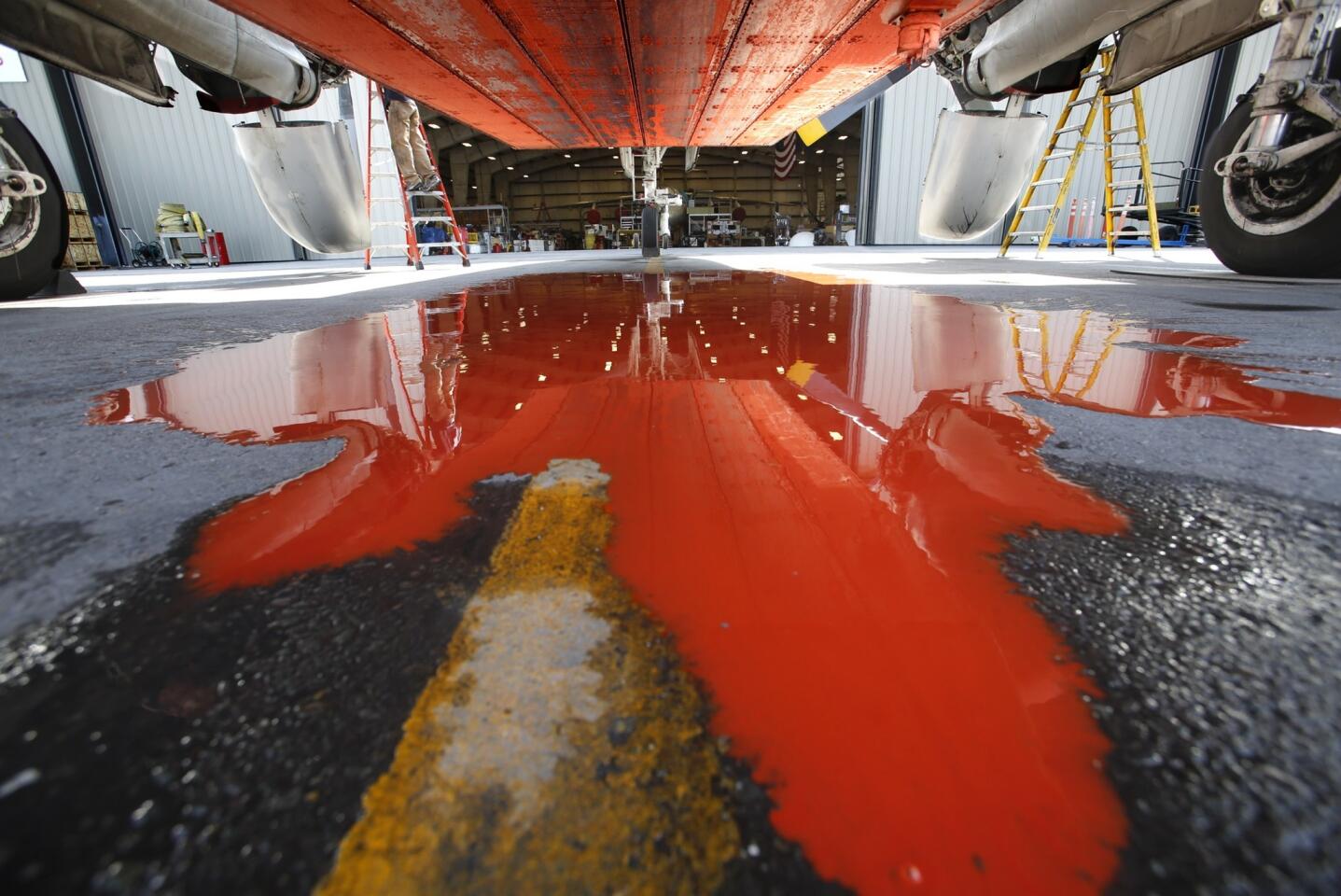
A puddle of red fire retardant sits under a 2,000-gallon tank of a P-2V firefighting aircraft after it was emptied during scheduled maintenance at Neptune Aviation Services Inc. in Missoula, Mont. During a wildfire the chemical is dropped from the airplane ahead of the flames to reduce the combustibility of threatened vegetation or structures. (Don Bartletti / Los Angeles Times)
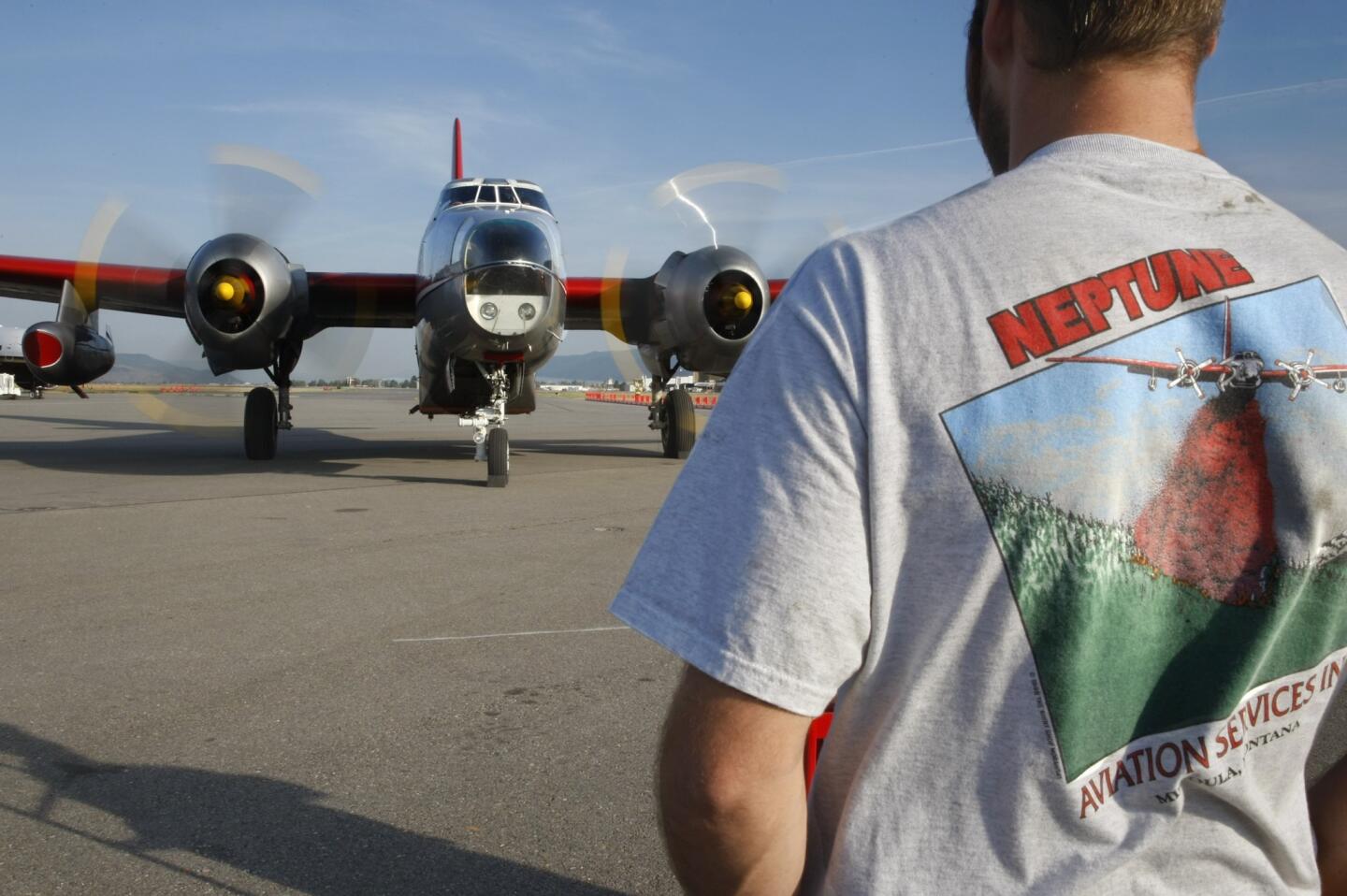
Aircraft mechanic Ryan Allen watches as an old Lockheed P-2V Neptune aircraft is tested after scheduled maintenance at Neptune Aviation Services Inc. in Missoula, Mont. Originally used by the U.S. Navy to hunt for Soviet submarines, the plane’s bomb bay has been replaced with a 2,000-gallon tank to carry liquid fire retardant. The P-2V was designed in the late 1940s to fly low and slow, and now the U.S. Forest Service uses it for precise dropping of retardant on wildfires. (Don Bartletti / Los Angeles Times)
Advertisement
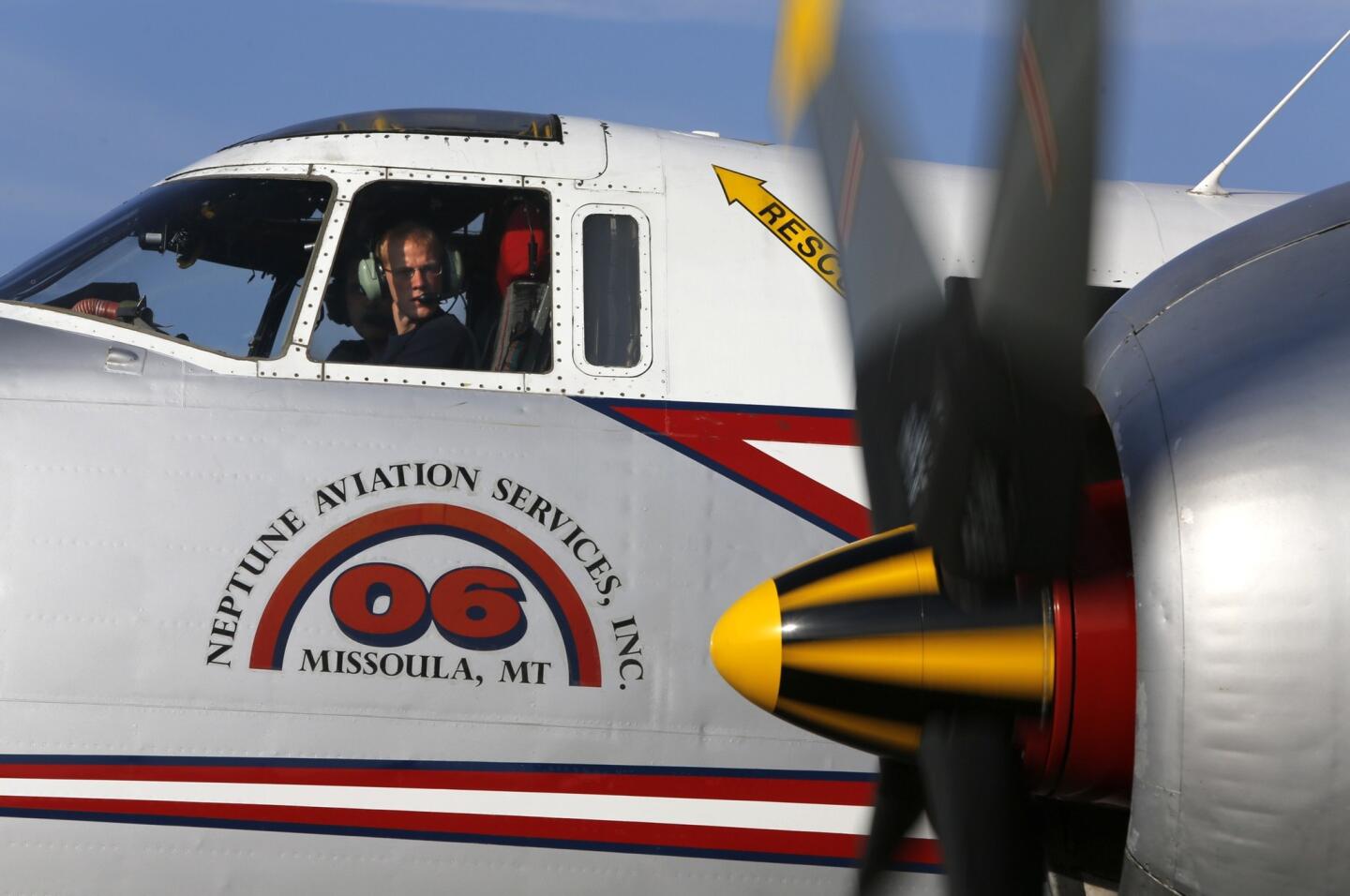
Crew chief Jeff Cunningham tests one of the engines on an old Lockheed P-2V Neptune aircraft during scheduled maintenance at Neptune Aviation Services Inc. in Missoula, Mont. It has been fitted with a fire retardant tank where the bomb bay used to be. (Don Bartletti / Los Angeles Times)
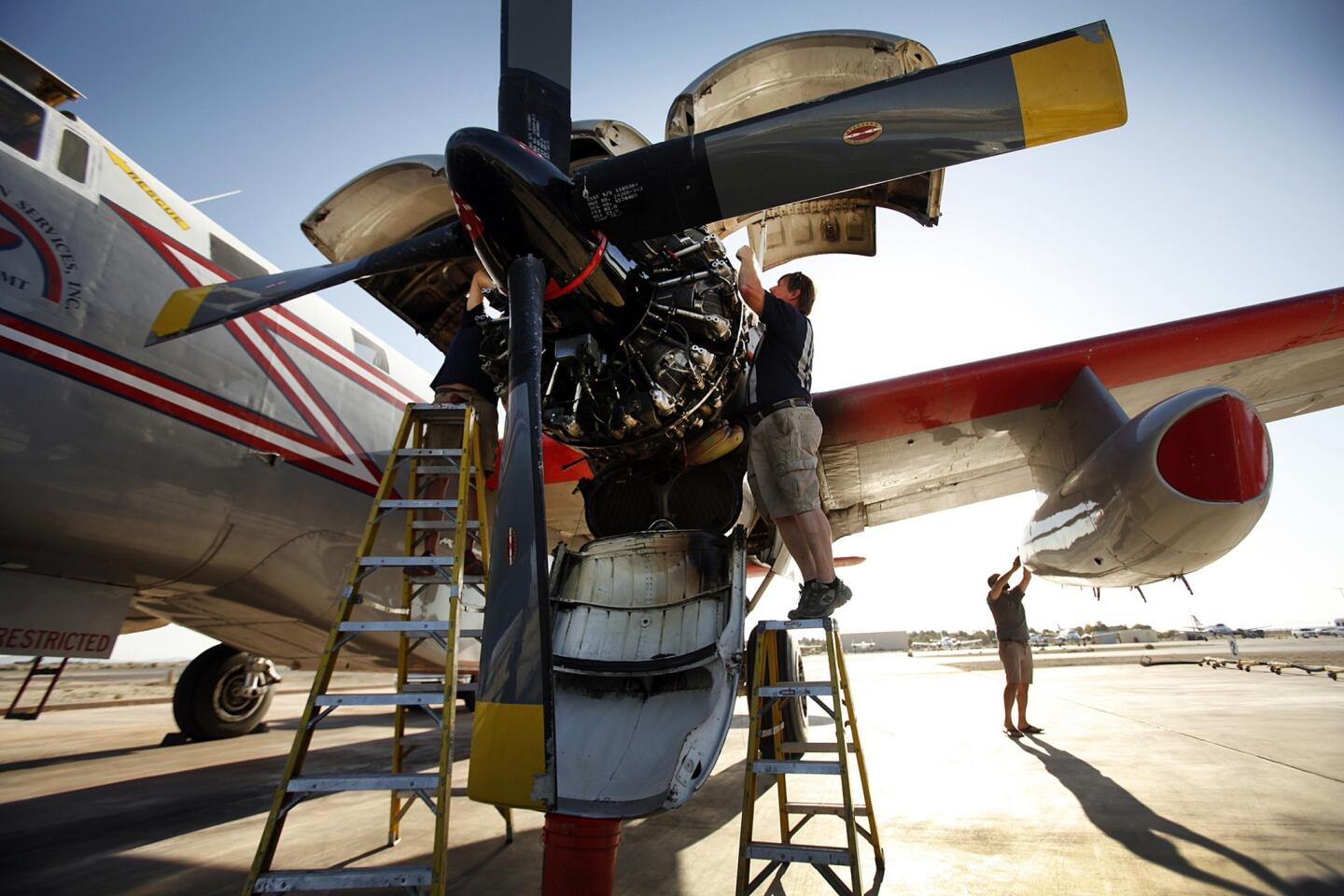
Kent Dexter, center, second mechanic, with Mathew Brendal, left, crew chief, work on the engine as pilot Tom Dux, right, conducts a preflight check as the firefighting tankers stage at General William J. Fox Airfield in Lancaster. (Al Seib / Los Angeles Times)
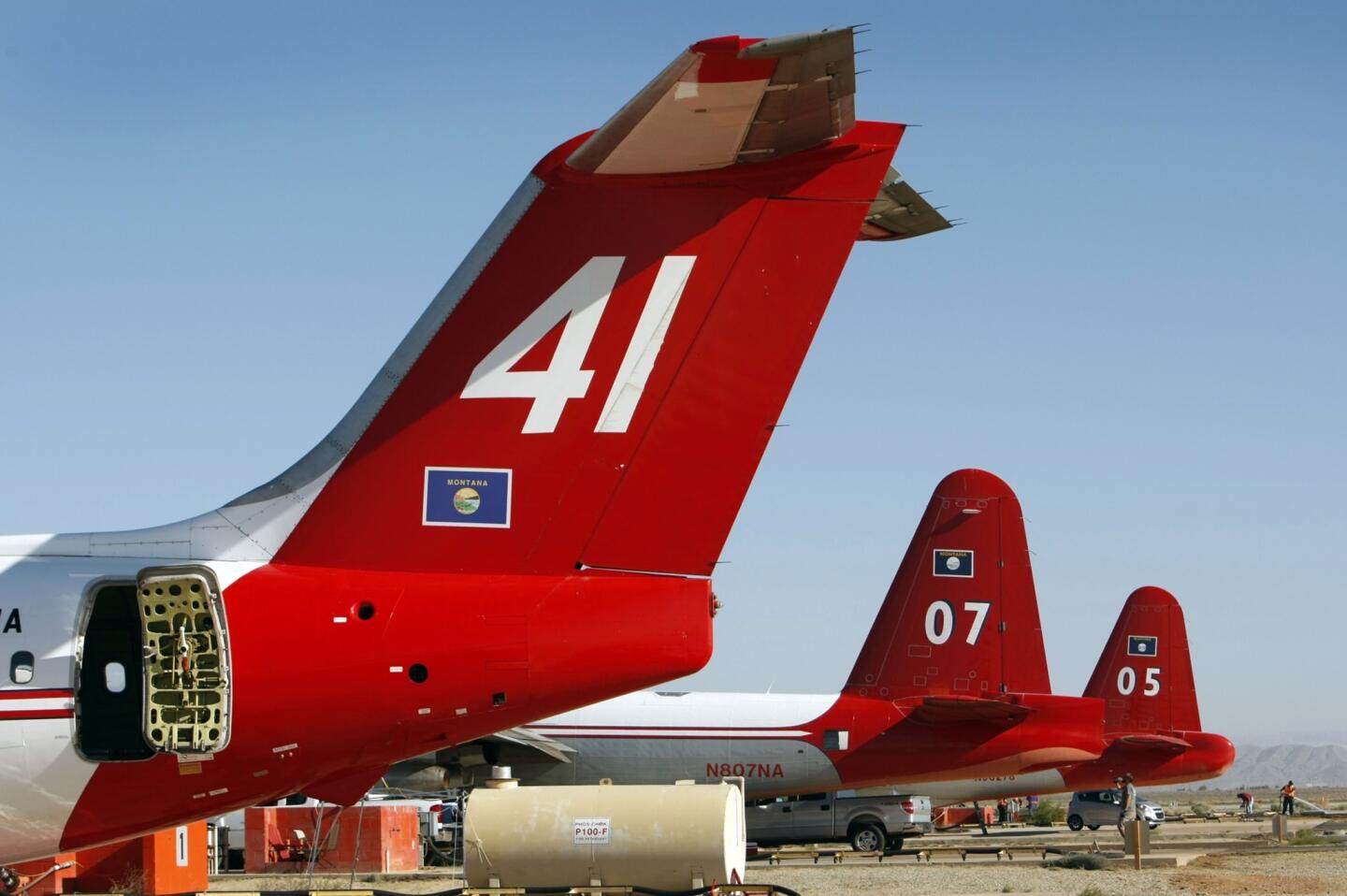
A British Aerospace BAe 146 jet, left, with Lockheed P-2V planes, right, operated by Neptune Aviation Services Inc. of Missoula, Mont., stage at General William J. Fox Airfield in Lancaster. The planes were called in to battle the Powerhouse fire that swept into the Angeles National Forest in the Lake Hughes and Lake Elizabeth area. (Al Seib / Los Angeles Times)
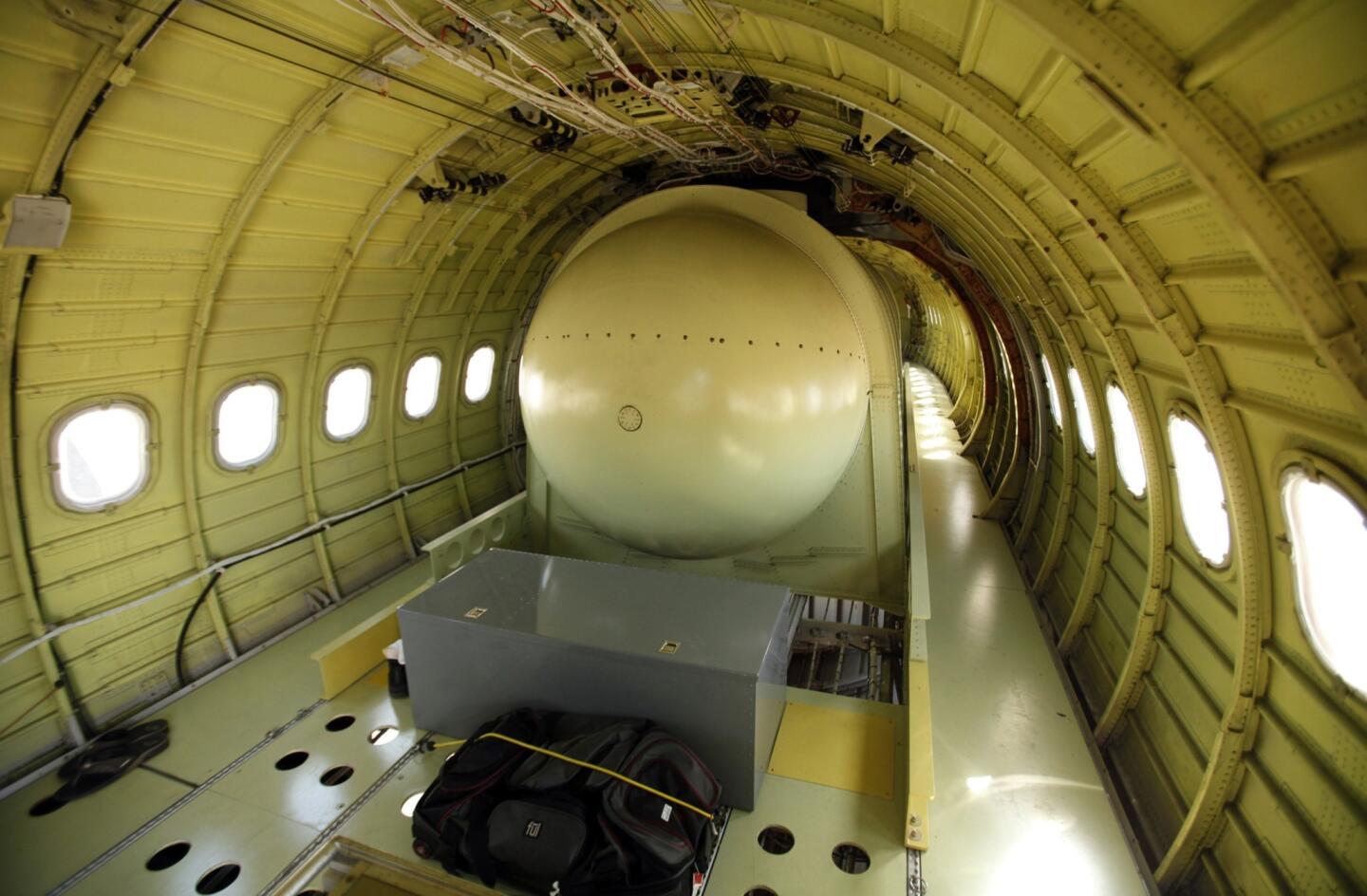
The holding tank, with a 2,700-pound capacity, sits in the fuselage of a British Aerospace BAe 146 jet during preflight testing as the wildfire tankers stage at General William J. Fox Airfield in Lancaster. (Al Seib / Los Angeles Times)
Advertisement
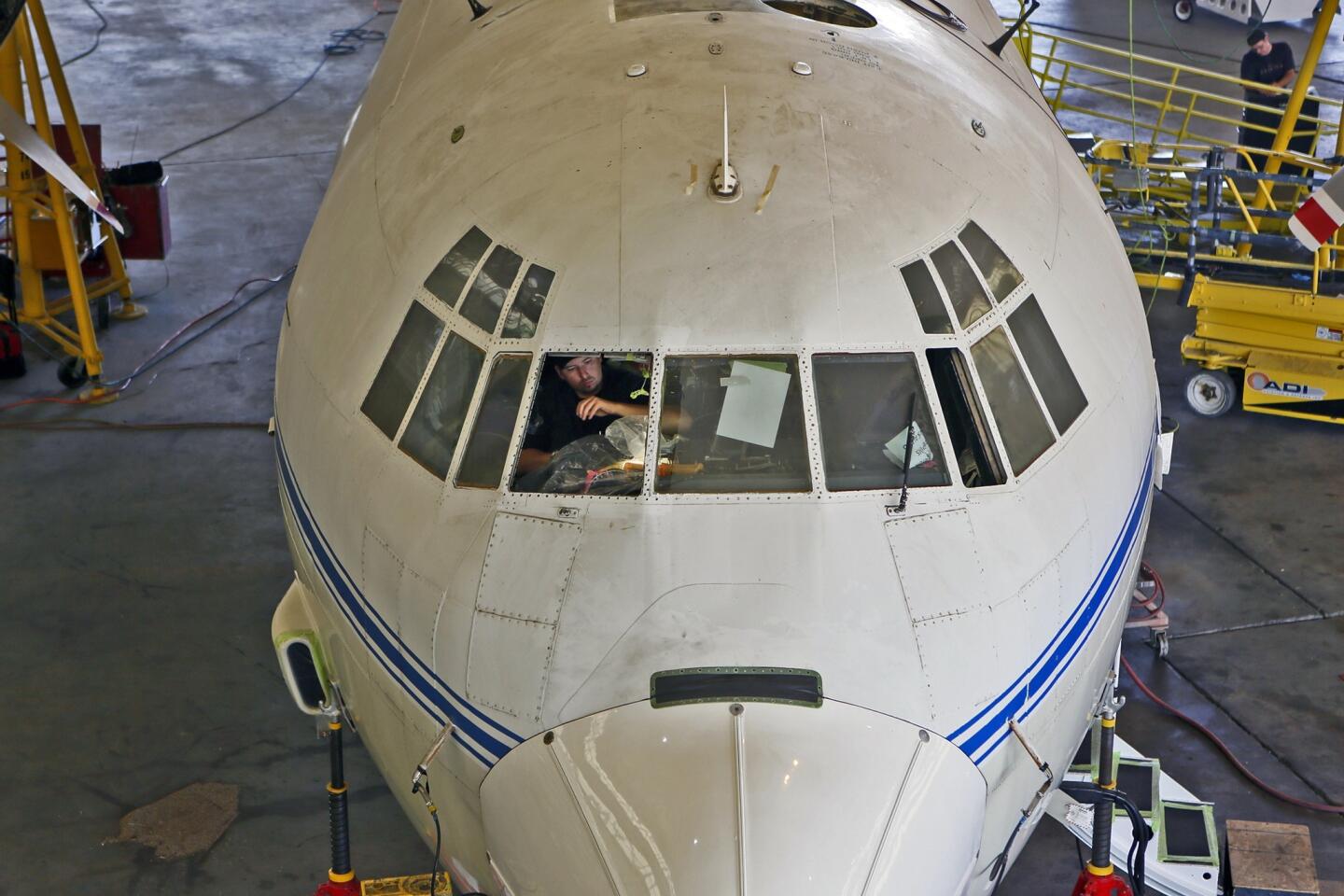
Coulson Aviation is working on converting a former Navy C-130 into a working firefighting plane at San Bernardino airport. The U.S. Forest Service has given Coulson an exclusive-use contract for the 32-year-old aircraft, which had been sitting in a Wisconsin museum for the last 10 years. (Irfan Khan / Los Angeles Times)
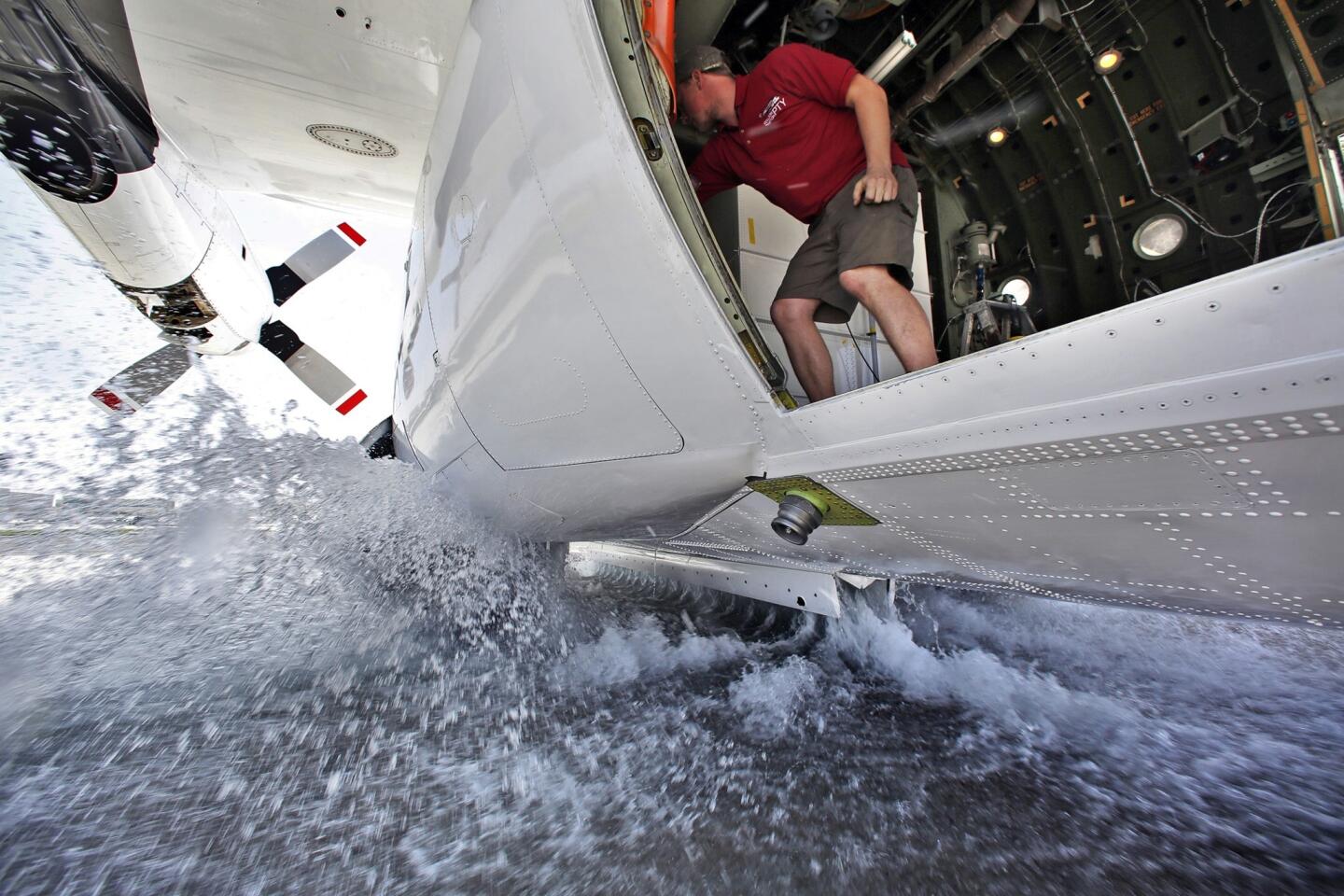
Russel Walton opens the door of a tank during a water flow test of a former Navy C-130 converted by Coulson Aviation into a working firefighting plane. The U.S. Forest Service has given Coulson an exclusive-use contract for the 32-year-old aircraft, which had been sitting in a Wisconsin museum for the last 10 years. (Irfan Khan / Los Angeles Times)
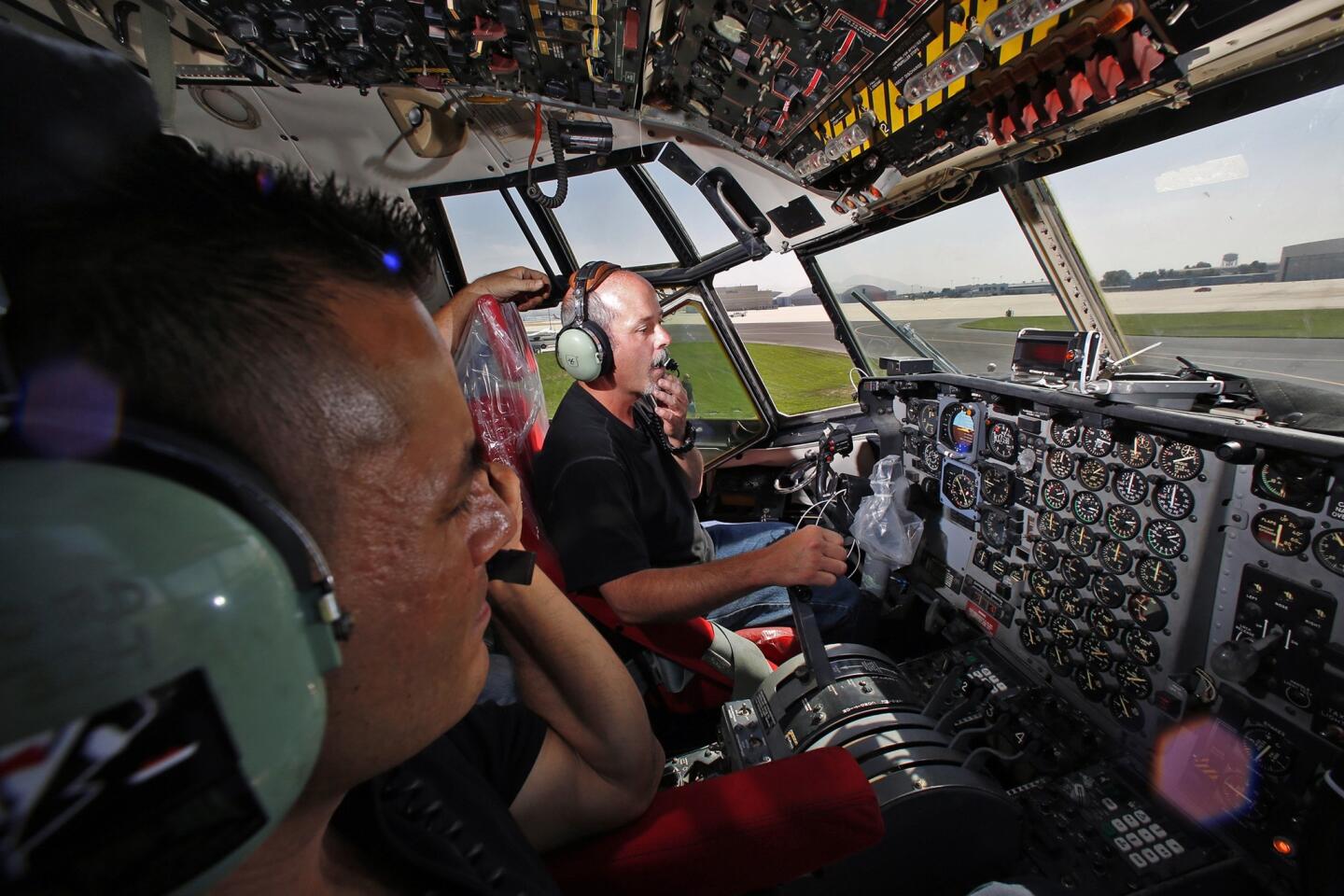
Flight engineers Mike Landeros, left, and John Garrett test-run the engines of a former Navy C-130 converted by Coulson Aviation into a firefighting plane. (Irfan Khan / Los Angeles Times)
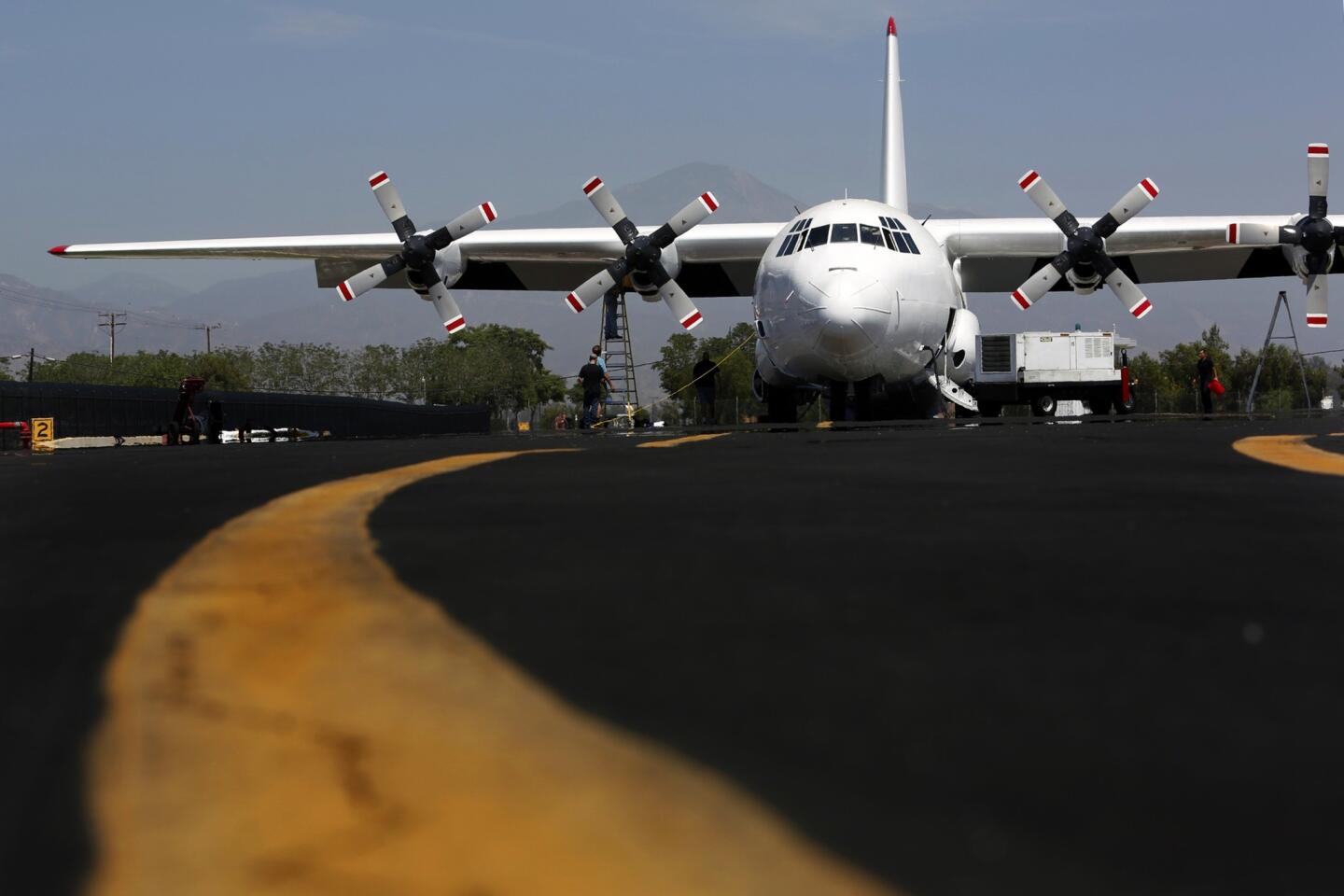
Engineers work on a former Navy C-130 converted by Coulson Aviation into a firefighting plane. The 32-year-old aircraft had been sitting in a Wisconsin museum for the last 10 years. (Irfan Khan / Los Angeles Times)







